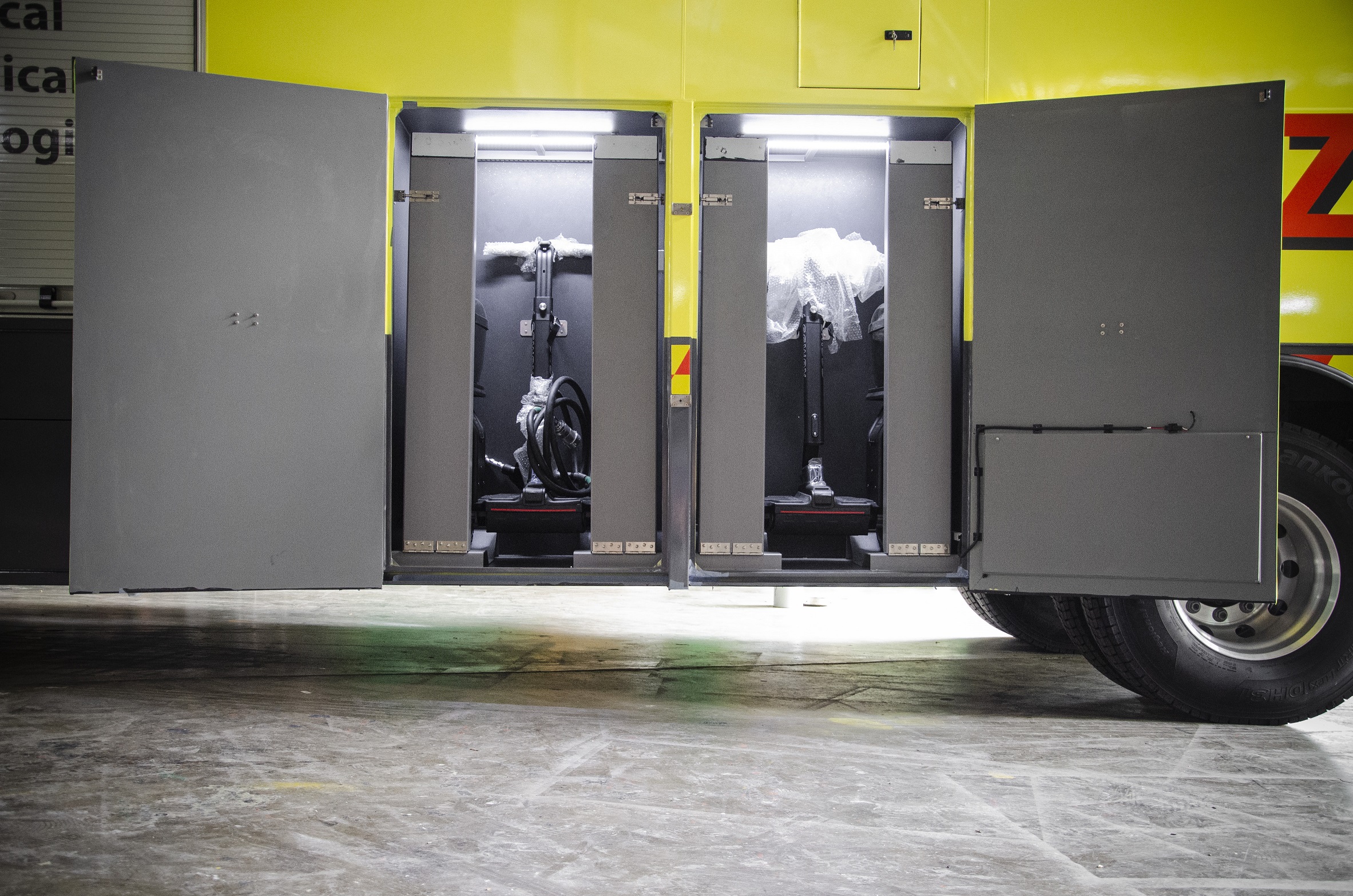Hazmat Command Vehicle (Seoul)

Hazmat Command Vehicle (Busan)
October 31, 2020
Canine Transporter
November 5, 2020







The Hazmat Command Vehicle (HCV) was specifically created to serve as a command centre for hazardous materials (hazmat) personnel in the event of biological warfare, industrial accidents or environments which are excessively polluted. Configured for Seoul, Korea, a Positive Pressure Ventilation (PPV) system is connected to the main chassis, allowing the HCV to operate within a hot-zone. This is essential in ensuring that all personnel inside the vehicle and the driver cabin will not be exposed to dangerous airborne particles outside of the vehicle.
 The HCV is also equipped with a 8 metre tall telescopic pan-tile mast situated at the back of the vehicle which comprises a pan-tilt-zoom 360° camera and a weather station to identify air conditions. The latter is crucial in determining air flow direction to mitigate further spread of hazardous particles in the air.
The HCV is also equipped with a 8 metre tall telescopic pan-tile mast situated at the back of the vehicle which comprises a pan-tilt-zoom 360° camera and a weather station to identify air conditions. The latter is crucial in determining air flow direction to mitigate further spread of hazardous particles in the air.
 On the left side of the vehicle, two individual compartments house respective segways to allow for personnel to react quickly and move about during a hazmat operation.
On the left side of the vehicle, two individual compartments house respective segways to allow for personnel to react quickly and move about during a hazmat operation.
 There are also ample storage compartments to keep stores which can be accessed from either side of the vehicle via roller shutters.
There are also ample storage compartments to keep stores which can be accessed from either side of the vehicle via roller shutters.
Vehicle Highlights
- Mercedes-Benz Sprinter 5.16 CDI
- 2.80 metres high, 2.60 metres wide, 7.7 metres long
- Ozone decontamination
- Individual inmate surveillance
- Individual double dated inmate transportation cell doors
- Custom moulded seats for inmates


